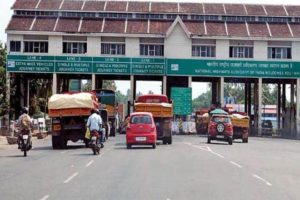 Businesses can start filing their first tax return under the new Goods and Services Tax (GST) regime as the GST Network has started the facility for return filing and paying taxes on the portal.
Businesses can start filing their first tax return under the new Goods and Services Tax (GST) regime as the GST Network has started the facility for return filing and paying taxes on the portal.
“The window for filing GSTR–3B has opened on August 5 and is fully functional now. Taxpayers can log into their account at the GST Portal and file their GSTR–3B return any time. They can also make tax payment using internet banking at the portal,” Navin Kumar, GSTN Chairman, said.
The GST returns for July and August will be filed on the Goods and Services Tax Network (GSTN) portal by filling up GSTR 3B form in which the taxpayer needs to provide consolidated details of outward supplies and input credit.
The taxpayer has to file a summary of self-assessed liabilities, input tax credit (ITC) and details of tax payment.
The last date of the filing the GSTR–3B for July 2017 is August 20, 2017 and the same for the month of August 2017 is September 20.
While filing their tax retuns in the GSTR–3B, a taxpayer has to provide details in three sections . In the first section, the summary details of liabilities on outward supplies and inward supplies subject to reverse charge including tax paid on zero-rated supplies are to be provided. Also, the taxpayer has to give details of interstate supplies and the integrated goods and services tax (IGST) paid.
In the second section, the taxpayer has to declare self-assessed ITC available, ITC reversals and ineligible ITC. In the third section, the taxpayer has to declare the details of payment of tax with accumulated ITC and/or cash available in cash ledger.
“The taxpayer is required to file his return by electronically signing either using DSC (compulsory for companies) or through Electronic Verification Code (EVC) sent on taxpayer’s registered mobile,” GSTN said in a statement.
Later, when the taxpayer files GSTR 1 and GSTR 2, the details furnished in GSTR–3B would be compared with the details generated from the declarations in GSTR 1 and GSTR 2 and in case of short payment of tax, the taxpayer will have to pay any additional amount along with interest through GSTR 3, it added.
Over 71.30 lakh excise, service tax and VAT payers have migrated to the GSTN portal and over 15 lakh new assessees have registered on the portal.
The final GST returns for July will have to be filed by these businesses by September 5 instead of August 10. Companies will have to file sale invoice for August with GST Network by September 20 instead of September 10 earlier.
The sales returns for September will have to be filed by October 10.


